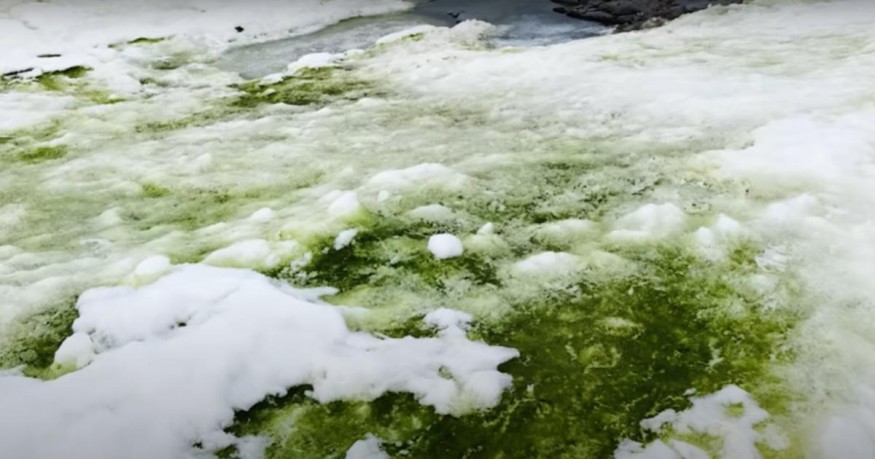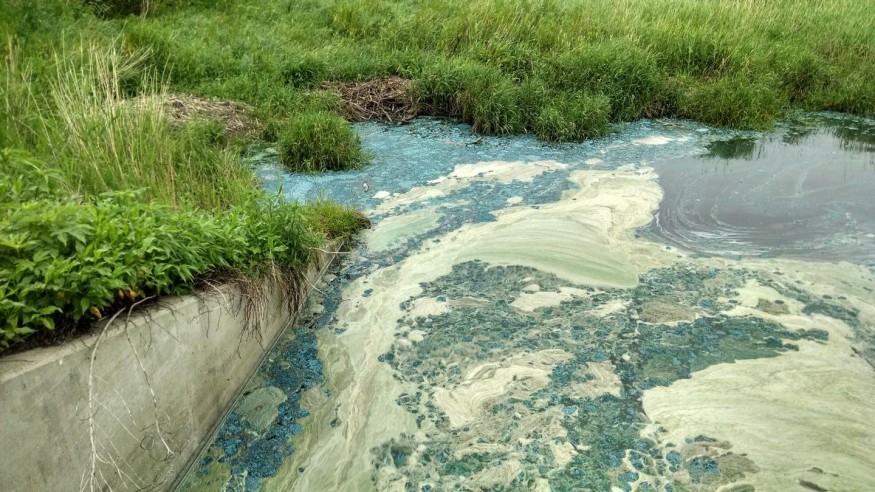Following another dry spring, experts anticipate that the poisonous bloom of algae that paints western Lake Erie a horrible shade of green each summer and threatens drinking water and fish will be less this year.

According to researchers, the shallowest of the Great Lakes is expected to have back-to-back years of relatively moderate algal blooms for the first time in more than a decade. However, they warn that this isn't an indication that the lake is about to turn a corner.
That's because they believe the news this year is due to a lack of strong rainfall, which would normally wash phosphorus-laden animal dung and chemical fertilizers off farm fields and into the lake, feeding algae.
"While this is encouraging news, the phosphorus concentration remains unchanged from previous years," said Rick Stumpf of the National Oceanic and Atmospheric Administration. "Until we see decreases in phosphorus concentrations, the following year's above-average rainfall will result in a more severe bloom."
Rendering Water Undrinkable
Since algal toxins rendered more than 400,000 residents in the Toledo area unable to drink their tap water in 2014, Ohio's authorities have been under pressure to battle the blooms. There has been little development thus far.
Gov. Mike DeWine, a Republican, is relying on cleaning up the lake with a 10-year plan that includes financial incentives for farmers to embrace better farming techniques and create a network of wetlands to absorb and filter runoff from fields.
Related Article : Harmful Blue-Green Algae Found in Australia Might Just Be What Makes Mars Habitable
Looking for a Permanent Solution

Those efforts, though, are only beginning. States dealing with a growing number of algae outbreaks are keeping a close eye on the strategy. Some environmental groups are pessimistic, while others who have previously clashed with the farming business are optimistic.
According to NOAA's estimate for this summer, the bloom will score a 3 on its severity index, which is the same as last year. Any number greater than 5 indicates a significant bloom.
Since 2008, algal outbreaks have grown increasingly regular and severe. However, if the prognosis for this summer holds true, three of the previous four years will be rated below a 5 on the scale.
Adaptive Farming
Farmers have been growing more cover crops and adopting innovative techniques to decrease fertilizer runoff throughout that time, according to Jordan Hoewischer, Ohio Farm Bureau's director of water quality and research.
"It doesn't make sense to place all the blame on the farmers if there is a huge bloom and give all the credit to the weather on years when there is a smaller bloom," he added.
Cyanobacteria Toxin
Blue-green algae, also known as cyanobacteria, can generate a liver toxin known as microcystin, which is toxic to humans and can be deadly to animals, including dogs. Even if there are fewer blooms in a given year, they can still release harmful poisons.
Reducing Toxic Discharge

The objective of NOAA and the other US and Canadian agencies is to get the Lake Erie bloom down to a 3 on the index.
Ohio, Michigan, and the Canadian state of Ontario have likewise committed to reducing phosphorus discharge by 40% by 2025 compared to 2015.
According to Laura Johnson, director of the National Center for Water Quality Research at Heidelberg University in Ohio, measurements this year in the Maumee River, which transports much of the agriculture runoff from Ohio and Indiana into the lake, there are still elevated phosphorus concentrations.
The main difference, she explained, is that it has been scorched, resulting in a significant reduction in the volume of water flowing through the river.
Blooms will continue to be an issue unless large and regular reductions in phosphorus levels are implemented in the agriculturally intensive Maumee River watershed, according to Don Scavia, a professor emeritus at the University of Michigan and a member of the prediction team.
"We can't just cross our fingers and pray for better weather to keep us safe," he explained.
For more news about Cellular Technology, follow Nature World New
© 2026 NatureWorldNews.com All rights reserved. Do not reproduce without permission.





